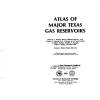Breadcrumb
Bureau of Economic Geology Publications
| Title | Publication Year Sort ascending | Abstract | Author | Publisher | |
|---|---|---|---|---|---|

|
Plio-Pleistocene depositional sequences of the southeastern Texas continental shelf and slope: geologic framework, sedimentary facies, and hydrocarbon distribution | 1991 | Plio-Pleistocene strata of offshore Texas having hydrocarbon exploration potential are restricted to the southeastern continental shelf and upper continental slope. This thick wedge of nearshore and deep-marine sediments firms the west margin of a late Neogene and Quaternary depocenter. |
Morton, R.A., Sams, R.H., Jirik, L.A., Banta, N.J., Single, R.S. | Bureau of Economic Geology |

|
A Glossary of Salt Tectonics | 1991 | In response to a need for a concise presentation of new terms and concepts in salt tectonics, we have compiled a glossary that focuses on ideas developed during the 1980's. |
Jackson, M.P.A., Talbot, C.J. | Bureau of Economic Geology |

|
Stratigraphic analysis of the Upper Devonian Woodford Formation, Permian Basin, West Texas and southeastern New Mexico | 1991 | The Upper Devonian Woodford Formation is an organic-rich petroleum source rock that extends throughout West Texas and southeastern New Mexico and currently is generating oil or gas in the subsurface. |
Comer, J.B. | Bureau of Economic Geology |

|
Regional hydrodynamics of variable-density flow systems, Palo Duro basin, Texas | 1991 | In mature sedimentary basins, where mechanical compaction is negligible, the hydrodynamics is typically described by steady-state flow driven by potential energy represented by the water table, which generally follows the topography. |
Senger, R.K. | Bureau of Economic Geology |

|
Integrated characterization of Permian Basin reservoirs, university lands, West Texas: targeting the remaining resource for advanced oil recovery | 1991 | Unrecovered mobile oil is oil that is movable at reservoir conditions but is prevented from migrating to existing we1 l bores because of geologic complexities or heterogeneities. |
Tyler, Noel, Bebout, D.G., Garrett, C.M., Jr., Guevara, E.H., Hocott, C.R., Holtz, M.H., Hovorka, S.D., Kerans, Charles | Bureau of Economic Geology |

|
Atlas of Major Texas Gas Reservoirs: Database | 1991 | Garrett, C.M., Jr., Kosters, E.C., Banta, N.J., White, W.G. | Bureau of Economic Geology | |

|
Geologic characterization of low-permeability gas reservoirs, Travis Peak Formation, East Texas | 1991 | The Lower Cretaceous Travis Peak Formation contains an estimated 6.4 trillion cubic feet (Tcf) of gas in place in East Texas and North Louisiana. Advanced technology will be needed to maximize recovery from this low-permeability ("tight") gas sandstone. |
Dutton, S.P., Laubach, S.E., Tye, R.S., Baumgardner, R.W., Jr., Herrington, K.L. | Bureau of Economic Geology |

|
Atlas of Major Texas Oil Reservoirs: Database | 1991 | Holtz, M.H., Noel Tyler, Garrett, C.M., Jr., White, W.G., Banta, N.J. | Bureau of Economic Geology | |

|
Geologic map of the Devil's Backbone Quadrangle, Texas | 1991 | Collins, E.W. | Bureau of Economic Geology | |

|
Geologic map of the Wimberley Quadrangle, Texas | 1991 | Collins, E.W., Baumgardner, R.W., Jr., Raney, J.A. | Bureau of Economic Geology |